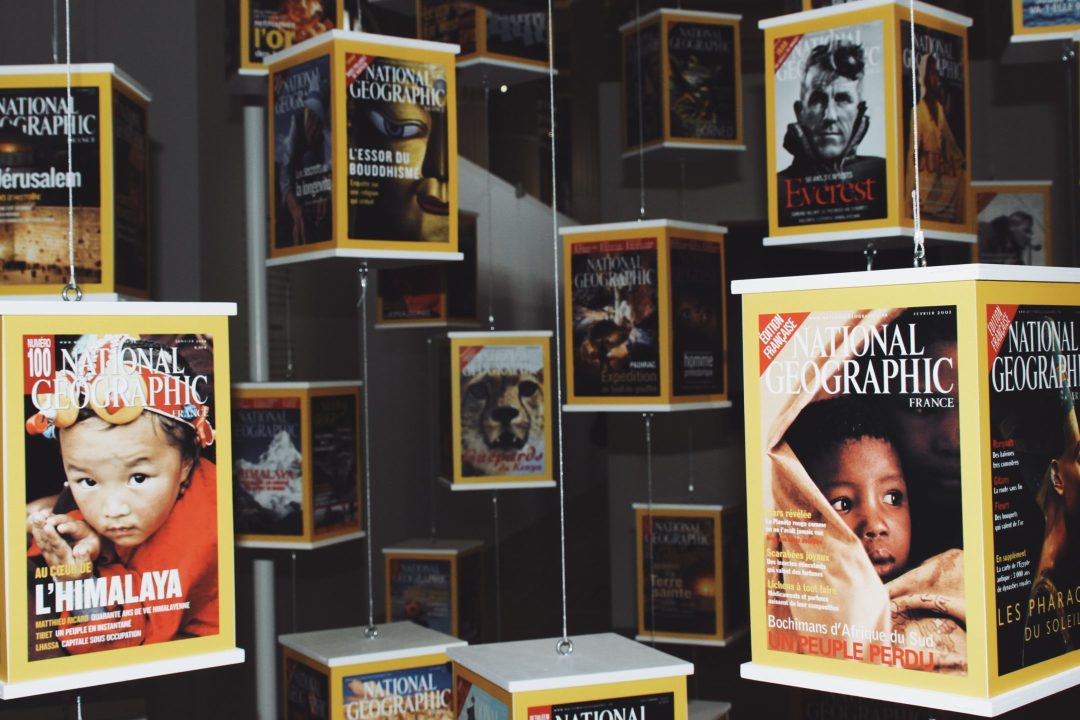
As far as museums go, the National Geographic Museum is unlike any other.
With access to over 130 years’ worth of photos, footage, data, and archival materials—plus a built-in audience already hooked on the National Geographic magazine, television channel, and social media (they beat Justin Bieber to be the eleventh most followed Instagram account in the world)—it’s no wonder the museum arm of the National Geographic Society offers a unique kind of experience.
“We like to say that a visit to the museum is like walking into the pages of National Geographic [magazine],” Kathryn Keane, Vice President of Public Programming and Director of the National Geographic Museum, told me. “Our joy is about taking the content we develop for our stories and repurposing [it] for our experience platforms.”
While this conversation took place pre-pandemic, their decades of experience with translating content across media are more instructive than ever, as museums around the world have been adapting their programming and exhibitions in new and uncharted ways.
Lucky for us all, Keane and Wesley Della Volla (Founder of Meridian Treehouse and former Director of Live Events and Experiences at National Geographic) had no shortage of great ideas museums of all types can try out in their own work. Here are a few of my favorites:
Extend the Story
One of the main challenges of museum work, says Keane, is figuring out how to best showcase objects.
While most exhibits include descriptions of an object’s appearance and materials, Keane recommends museums also share stories about the object that answer questions like who made it, why they made it, where its raw materials are from, how it’s survived, and where it’s been since it was created.
Whether your museum is educating its community about a historical object, scientific discovery, live animal, cultural practice, or a work of art, these questions will help visitors engage with the object on a deeper and more resonant level.
As Keane puts it, “The artifacts themselves don’t tell the story. We must build stories around them.”
Give Your Audience an Experience
The museum’s team knows that audiences want to feel a part of something, and they use their various educational channels to give them just that.
“I could watch a TED talk…” Della Volla explains, “But what I can’t do is be in the same room as that person and ask them a question or meet with other like-minded people who are just as curious about that presenter.”
With physical distancing protocols still in effect, that room can be virtual. Here are some places to start when thinking of building an online experience: Who can your museum work with to educate digital visitors on something they normally wouldn’t have access to? What partnerships can you form now to shine a light on stories your audience may not be hearing otherwise? How can your museum get people together right now to connect and share their own stories?
One of the National Geographic Museum’s greatest assets is its network of scientists, explorers, photographers, and grantees. By putting these experts directly in front of audiences, the museum allows them to get behind-the-scenes access to the stories being shared in their exhibitions and other channels.
Don’t have a roster of professional explorers at the ready? Don’t worry, there’s something all museums can do.
“Look into your own staff,” Della Volla suggests. “Your colleague down the hall may be a registrar of a collection or a curator…and to people on the outside they’re a rockstar…Have them elevated, give them a chance to talk about the work they do. Look into your internal talent and find how you can help them shine.”
This strategy is a win-win for everyone—the museum gets to put on unique and engaging programming, the featured staff person gets a chance to participate in professional development through public speaking and storytelling, and the audience gets to hear first-hand accounts of a world they have very little access to otherwise.
Make Your Museum Welcoming
Most people associate National Geographic with their prolific collection of photos and videos of wildlife, but they’re also on a mission to educate the world about how to protect the planet and ensure there’s wildlife to be amazed by for years to come.
When it comes to their educational mission, they don’t shy away from tough conversations—they just make sure to do it in a welcoming way.
“You’ve got to meet them where they are too,” says Della Volla. “It’s important to make your museum feel like it’s a place anyone can be part of, that it’s a safe place for important conversations about issues people are interested in.”
Keane adds: “It’s important to do work that advances the field, but we also need to do programming that reflects the interests of the constituents and makes complex stuff relevant and accessible.”
How can you achieve this? Della Volla calls it “stealth education.” That’s when you bring people in with something you know they’re going to love (cat videos, pandas rolling down a hill, stunning drone footage of a landscape, a beer and a laugh) and then, as he jokingly puts it, you get them with an, “Oh crap, I’m learning!” moment.
“You have to make it relatable, accessible, and enjoyable,” Della Volla concludes. “If you don’t have that, then you’re doing a disservice to science, to learning, to everyone in your community. Lifelong learners want to know they have a place to go, and it’s gotta feel like a place they’re welcomed in.”
This interview has been edited and condensed.







